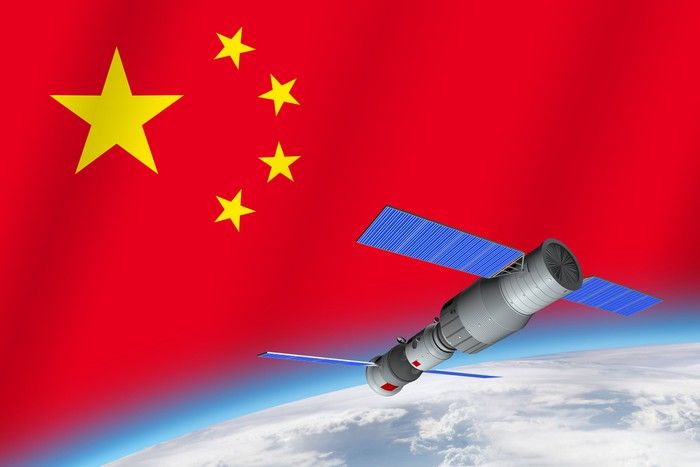China’s Offensive Space Technology ‘On the March’
Article by Anthony Capaccio July 10, 2021 (bloomberg.com)
• Defense Secretary Lloyd Austin has repeatedly referred to China as the top military challenge. China’s threats to U.S. satellites and Russian advances in ‘counterspace’ technologies were among the justifications American officials cited for establishing the U.S. Space Force and the regional Space Command during the Trump administration. According to Rear Admiral Michael Studeman, the top intelligence official for the Pentagon’s Indo-Pacific command, China is making sizable, long-term investments in weapons designed to jam or destroy satellites as the nation seeks to rapidly narrow the gap in space technology with the U.S.
• In April, the U.S. Office of the Director of National Intelligence said that the Chinese military “will continue to integrate…satellite reconnaissance and positioning, navigation, and timing, and satellite communications into its weapons and command-and-control systems to erode the U.S. military’s information advantage.”
• “[China and Russia] look at our space capability and want to equal and exceed those and be able to dominate to guarantee themselves the maneuvering they need to be able to secure their objectives if they’re in a fight,” said Admiral Studeman. “China is pushing to develop antisatellite weapons with capabilities from “dazzling to jamming, to kinetic kill-from-the-ground, from space — all that, they’re on the march.”
• As Beijing continues to train its military space elements to “field new destructive and nondestructive ground- and space-based antisatellite (ASAT) weapons,” according to a DNI ‘Threat Assessment’ report, developing counterspace operations will be integral to a potential U.S. military campaign. China has “already fielded ground-based ASAT missiles intended to destroy satellites in low-earth orbit and ground-based ASAT lasers probably intended to blind or damage sensitive space-based optical sensors” on low-earth orbit satellites, according to the report.
• In a draft report on the fiscal 2022 defense bill, the House Appropriations Committee signaled its concern over “the growing threats posed by ground-based lasers capable of damaging or destroying sensitive space sensors in low-orbit, and the lack of a coordinated strategy to understand this threat and develop concepts to mitigate its risks.” The report directed the Pentagon, “to provide a plan to collect, consolidate, and characterize laser threat activity data of potential adversaries, and to develop strategies to mitigate these threats.”
• China is pursuing parallel programs for space, military and commercial communications satellites, with a ‘small number’ of dedicated military communications satellites. On the other hand, the U.S. has a substantial amount of activity going on as “we recognize the threat,” says Studeman. “It will be a game of measures and countermeasures and counter-countermeasures for some time to come.”
• The U.S. Space Force is building 48 ground-based ‘counterspace’ weapon systems known as the ‘Meadowlands system’ that are designed to temporarily jam but not destroy Chinese and Russian satellites. The first of these is expected to become operational in March 2020.
 China is making sizable, long-term investments in weapons designed to jam or
China is making sizable, long-term investments in weapons designed to jam or destroy satellites as the nation seeks to rapidly narrow the gap in space technology with the U.S., according to the top intelligence official for the Pentagon’s Indo-Pacific command.
destroy satellites as the nation seeks to rapidly narrow the gap in space technology with the U.S., according to the top intelligence official for the Pentagon’s Indo-Pacific command.
China is pushing to develop antisatellite weapons with capabilities from “dazzling to jamming, to kinetic kill-from-the-ground, from space — all that, they’re on the march,” Rear Admiral Michael Studeman said this week during an intelligence-security trade group’s webinar.

Studeman’s comments mark the most current unclassified assessment of the

counter-space capabilities of a nation that Defense Secretary Lloyd Austin repeatedly refers to as the top challenge for U.S. defense planning and spending.
China’s threats to U.S. satellites as well as Russian advances in counterspace technologies were among the primary justifications American officials cited for establishing the U.S. Space Force, the sixth U.S. military service branch and the regional Space Command, during the Trump administration.
“They take a look at our space capability and want to equal and exceed those and be able to dominate to guarantee themselves the maneuvering they need to be able to secure their objectives if they’re in a fight,” Studeman said.
 The U.S. Office of the Director of National Intelligence said in April that the Chinese
The U.S. Office of the Director of National Intelligence said in April that the Chinese

military “will continue to integrate space services — such as satellite reconnaissance and positioning, navigation, and timing and satellite communications — into its weapons and command-and-control systems to erode the U.S. military’s information advantage.”
Developing so-called counterspace operations will be integral to a potential military campaign, the DNI said. Beijing continues to train its military space elements and “field new destructive and nondestructive ground- and space-based antisatellite (ASAT) weapons,” the intelligence office said in its annual Threat Assessment report.
It has “already fielded ground-based ASAT missiles intended to destroy satellites in low-earth orbit and ground-based ASAT lasers probably intended to blind or damage sensitive space-based optical sensors” on low-earth orbit satellites, according to the report.
FAIR USE NOTICE: This page contains copyrighted material the use of which has not been specifically authorized by the copyright owner. ExoNews.org distributes this material for the purpose of news reporting, educational research, comment and criticism, constituting Fair Use under 17 U.S.C § 107. Please contact the Editor at ExoNews with any copyright issue.


 Last week, Defense Secretary Lloyd Austin got a comprehensive report on the
Last week, Defense Secretary Lloyd Austin got a comprehensive report on the

 from the United States Space Force, United States Space Command, as well as the National Reconnaissance Office were present, some in person and others via video teleconference.
from the United States Space Force, United States Space Command, as well as the National Reconnaissance Office were present, some in person and others via video teleconference.